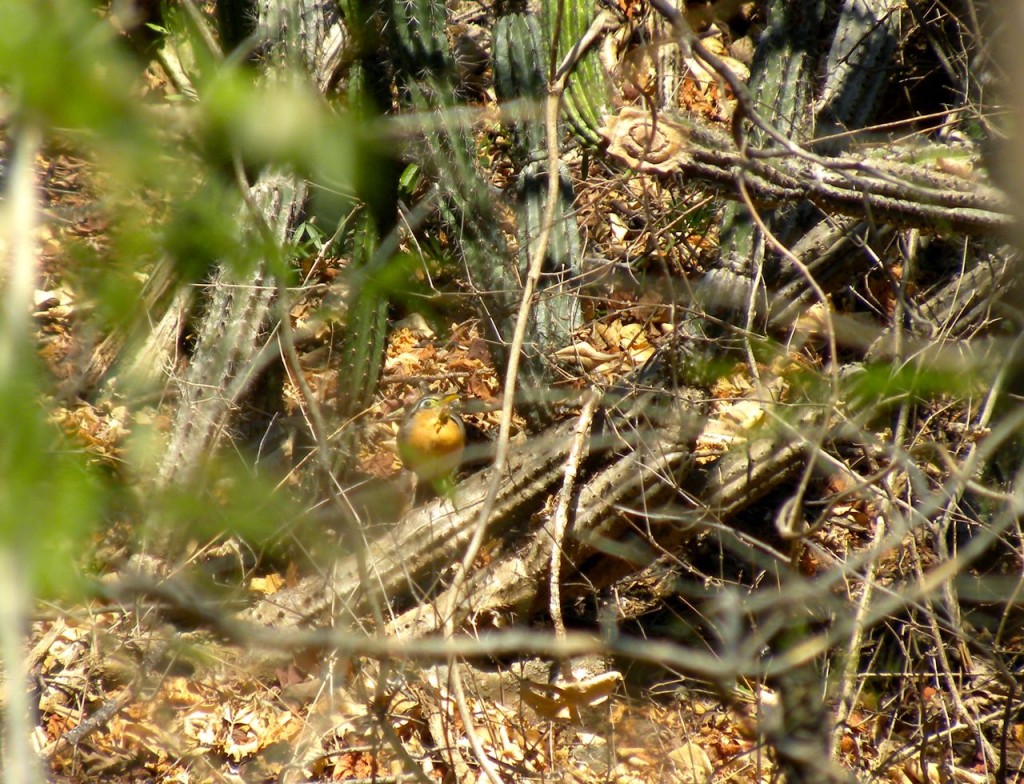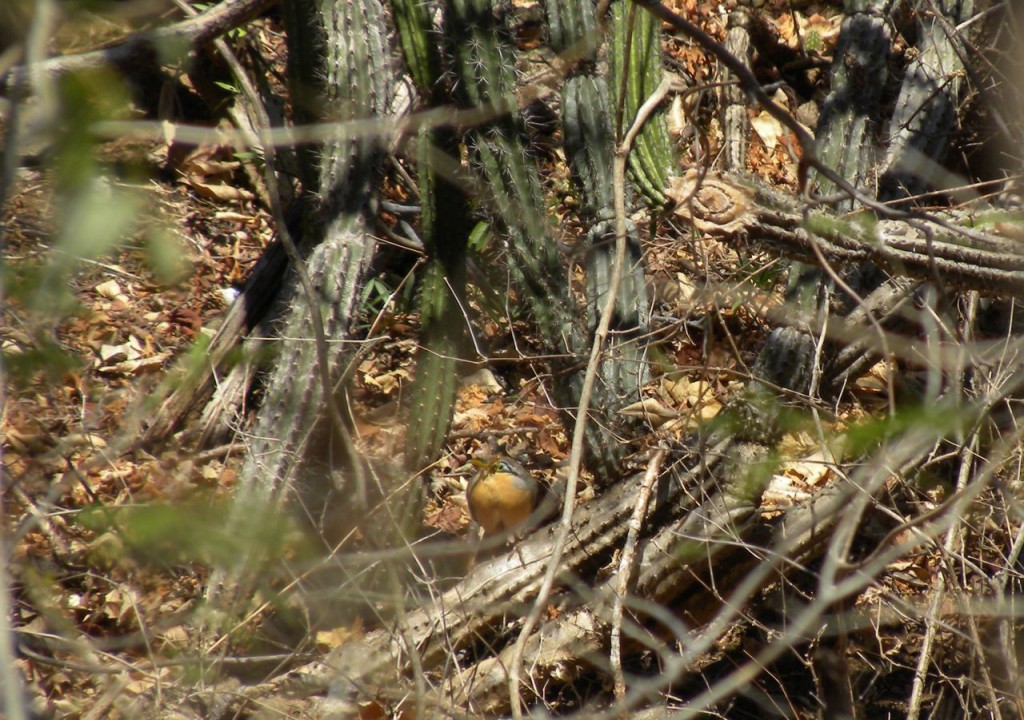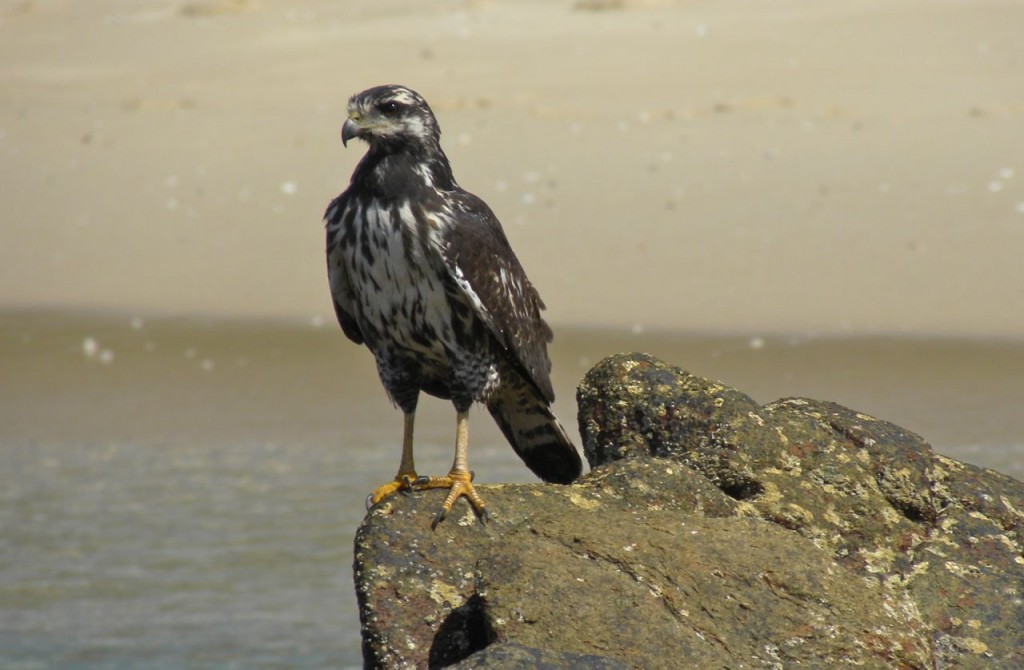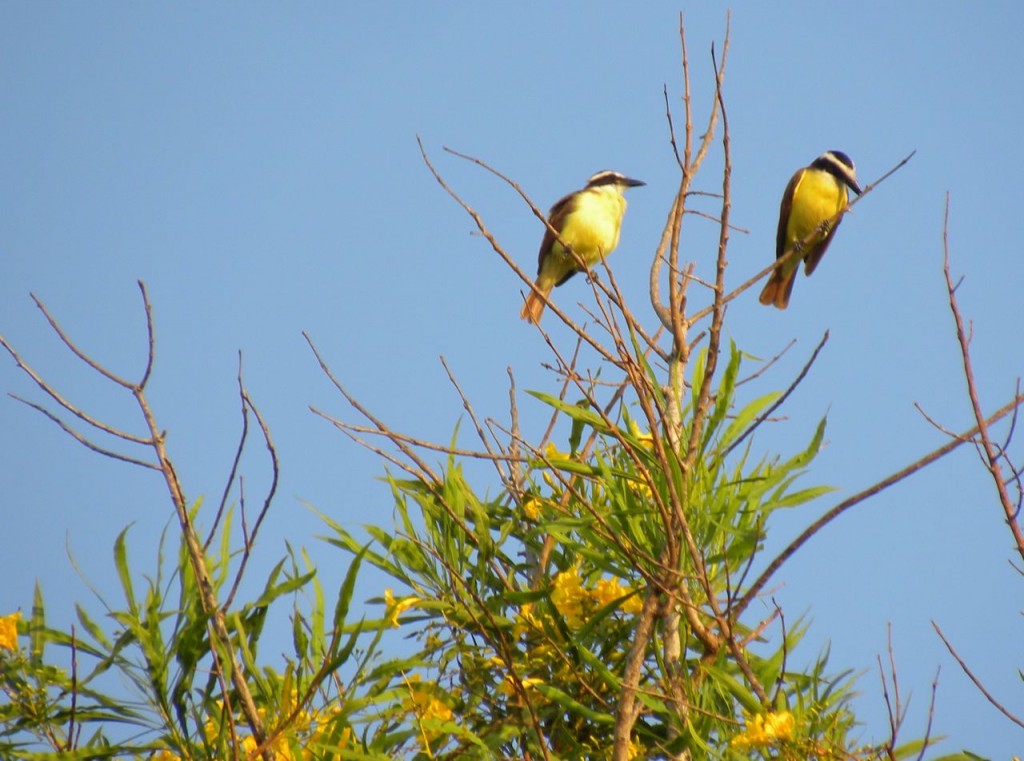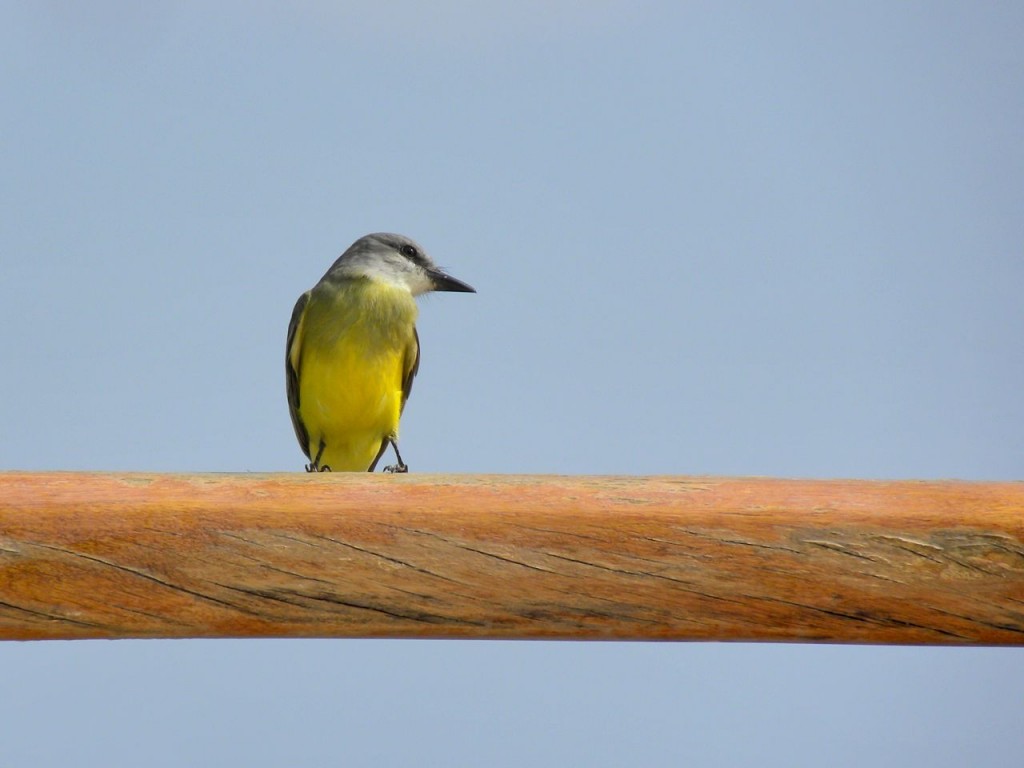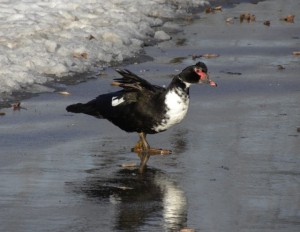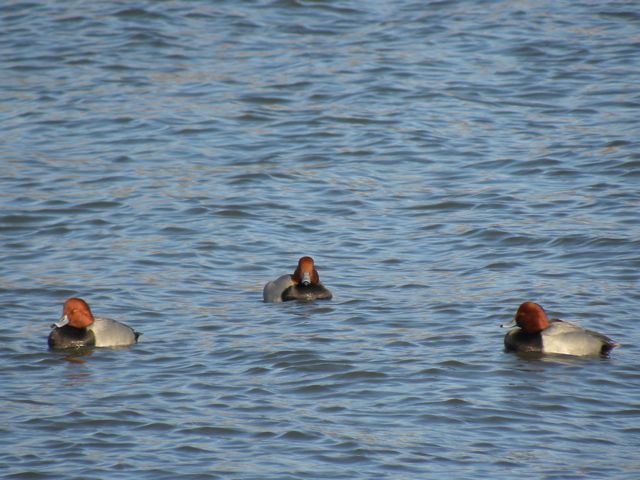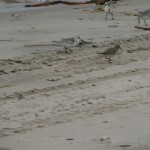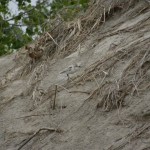January 18 2013. Today I engaged Eric Antonio Martinez to guide me, to show me the birds of ‘the Isthmus’ this culturally, ecologically and climatically distinct part of Mexico.
It was a blockbuster day with more firsts than I can possibly recount and two Birds of the Day; Rosita’s Bunting and Lesser Ground Cuckoo.
First the setting. It’s mid January and there is a wickedly cold slab of air sitting over the northern part of Mexico, for reasons that I don’t fully understand it is giving rise to an unforgiving and unrelenting gale force blast of wind here in the south. We had to seek canyons and crevices tucked out of the wind to hope to see any birds at all. Where you might normally have expected to see birds of all sizes and shapes picking away in open fields or perched on fence posts, there were none. So we worked the lower edges of a short range of mountains that lie just north of the town of La Ventosa.
The highlights without getting too tedious were: an early Feruginous Pygmy Owl that responded to Eric’s calling, several Doubleday’s Hummingbirds a dark green mite with a long red bill, Ash-throated Flycatchers much like ‘our’ more familiar Great-crested Flycatcher, a Laughing Falcon a stocky accipter-like falcon that specializes in meals of snakes, and several Scissor-tailed Flycatchers. The day’s list actually ran to a bit over 50, some of which were quite familiar like Nashville Warbler, Warbling Vireo and Blue-winged Teal. And then there were the Birds of the Day.
Bird of the Day number one. In a dry scrubby woodland edge we happened upon several Rosita’s Buntings, aka Rose-breasted Bunting. This species is only found here on the slopes of this little mountain range. I have never encountered a bird quite as eye-popping as this, the male’s head, back and wings are a vivid electric blue, bluer than an Eastern Bluebird but maybe matched by the best a Blue Jay has to offer. Its breast and belly though are in evolving shades of tangerine through crimson, the full range of a spectacular sunset. Here’s a couple of pictures, one is pretty blurry but it hardly matters because its the colours that make the bird.
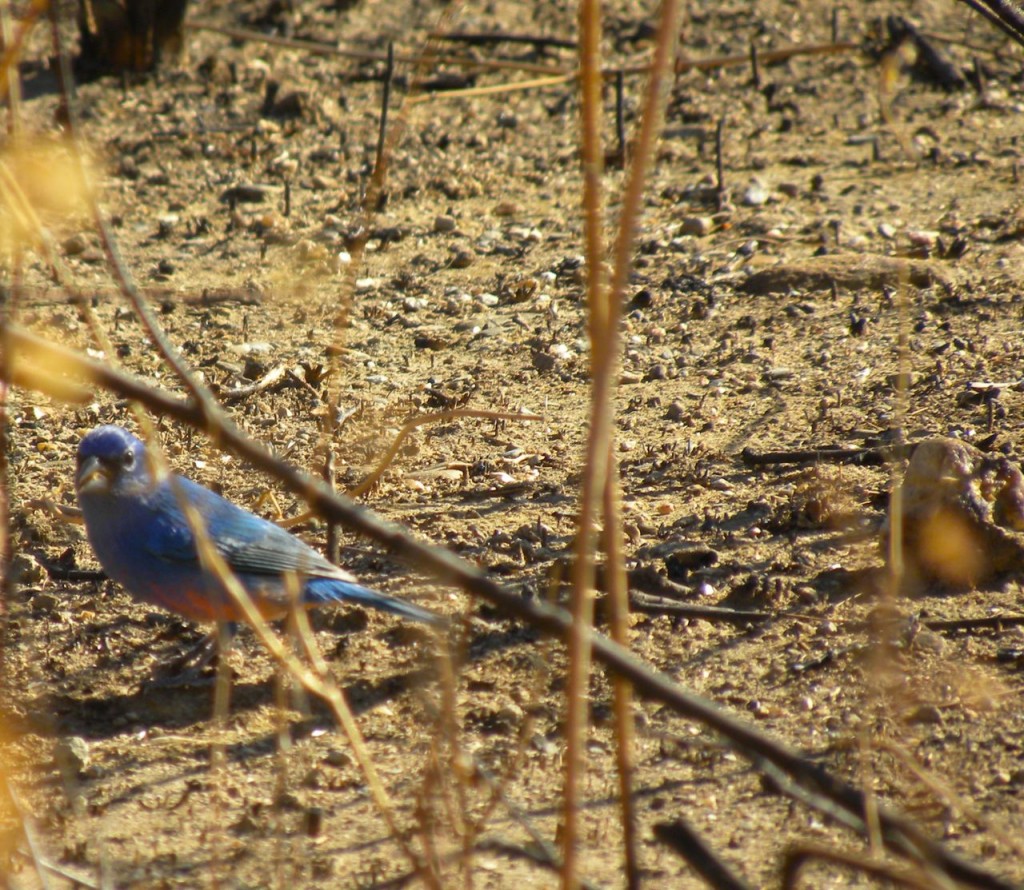
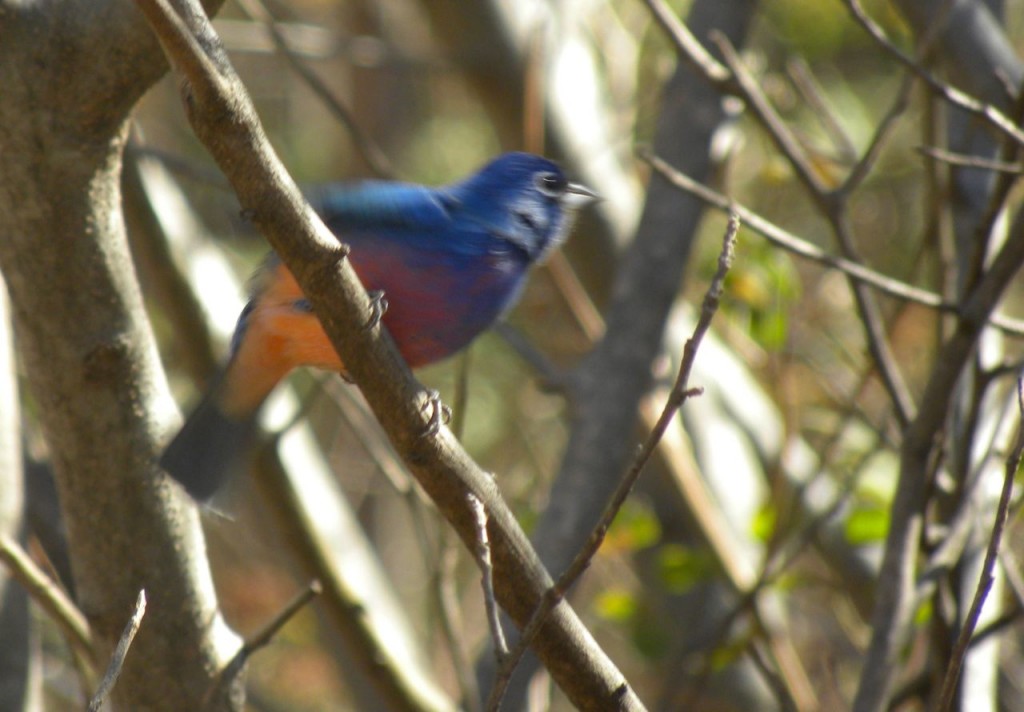
Bird of the Day number two. We set out to find a Lesser Ground Cuckoo, a relative of the Roadrunner; which makes it a potentially curious bird to begin with. They are elusive, secretive, ground hugging birds of dry scrubby woods. To make up for their evasiveness they have a call like an infuriated screaming and whistle-blowing referee, They’re happy to be heard but just don’t want to be seen. We tried calling for them for a long time and eventually one responded; it was impossible to find it though. Then as we finally turned to walk away I looked across the shallow canyon beside the path and put my binoculars on something a little different; what at first I took to be an American Robin turned out to be bird we sought, the Lesser Ground Cuckoo. It was facing me and had an expression of anxiety emphasized to theatric effect by the most remarkable Cleopatra eyes, the dark round eye itself surrounded by a large teardrop field of blue skin. In the pictures below the bird is partly obscured by foreground clutter, click on them to enlarge the photo and look closely and you’ll get the idea.
